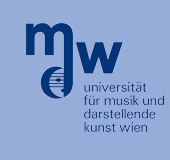Abstract

Pei Ju Tsai; Sandra Carral
The Pipa is a short-necked lute and one of the oldest and most important solo instruments in China. Because of its complicated technique and wide range of expressive musical forms and styles, the Pipa is an instrument which is popular not only in China, but also in Western culture.
The traditional Pipa schools were formed in Shanghai, the most prosperous place, in the middle of the nineteenth century. Each Pipa School had its own special music collections, notations, fingerings (techniques), styles, different improvisations, performance aesthetics and representative Pipa teachers.
For this study, recordings of three representative Pipa Masters were used to analyse the same civil piece “Yue er gao” (The Moon on High) instead of simply analysing the musical score, using the computer program SNDAN developed by Rob Maher and James Beauchamp. This paper explores the way the masters used to perform the same core melody but embellished it in various ways, which were governed by the different aesthetic principles of the respective school. In addition, this paper examines how various playing techniques produce different sound effects regarding pitch variation and tremolo.

